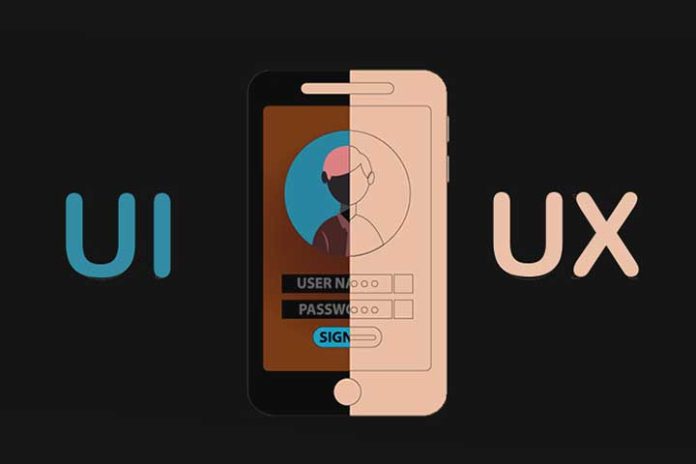Surely you have ever heard about UX/UI. And it is that both concepts have been a trend in recent years, especially in the digital environment. But do you know what exactly each of them consists of? Do you know their differences? We answer all your questions and tell you how to apply them to your digital marketing strategy.
What is UX?
The term UX comes from User Experience in English, known as User Experience. It is what a person perceives when interacting with a product or service. This concept also has to do with the feeling that the user feels satisfied and happy with it, so to obtain a good UX, we must design helpful, usable, and desirable products.
What is UI?
The term UI comes from User Interface in English, which means User Interface. The view allows a user to interact effectively with a system while using it, such as a website, blog, or mobile application. The user interface comprises information architecture, visual elements, and interaction patterns.
Fundamental differences between UX and UI
Understanding both terms, let’s talk about the differences between UX and UI because they denote different processes, although they go hand in hand in most cases. Let’s see it below:
1. The user interface
User Interface visual interface focuses on how the user interacts with the product or service, while the User Experience focuses on how they see it. Thus, the UI is related to the visual interfaces of the website or application: without a screen, there is no UI. On the other hand, in the UX, the user’s feeling in relation to an experience does not have to do so much with a screen. Said experience can be more pleasant if we eliminate some stages in using the product or service, which means fewer screens to interact with.
2. The way of directing the user
The UI directs the user and what to do while using the site or application, thus making navigation easy to understand and actions simple. Instead, the UX should make browsing enjoyable and worthwhile. Not even the most attractive site will satisfy users if they do not get the information they expect and how they want to consume.
3. Reason vs. emotion
While User Interface is driven more by reason, User Experience is driven by emotion. There are good practices on the easiest way to navigate a site or app, as it is a streamlined process. However, to evoke a positive feeling in the user, we must conceive who our audience is, what they are looking for, and the context in which we find ourselves. Both the UI and the UX will be essential for this, despite both being directed in different directions.
However, what is related to the UX and the UI is the importance of taking into account, in any case, the user. In this way, without both concepts being the same, the difference makes them work together to optimize user interaction and improve the product and service itself.
In any case, the balance between UX and UI is set by the needs of each project, its concept, and its development. Depending on this, one may have more weight than the other since no common formula applies to all applications and websites.
Also Read: What Is UX Design And Its Component
Benefits of using UX and UI
Reading all of the above, you may have realized that both UX and UI can have great value for your digital marketing strategy to be successful. You thought well! Although surely you wonder which of the two is better to apply for. The answer is simple: both; Well, as we commented, there is no reason to use only one since both complement each other.
Let’s see the most significant advantages of implementing UX/UI!
1. Promotes customer acquisition and retention
Offering a good UX/UI gives companies a competitive advantage in attracting and retaining their customers. In this way, the more visually pleasing the design of a brand’s site and the more intuitive its features are, the easier it will be to build user trust and, therefore, increase the chances that the brand will attract such users and customers. Become customers. If we create, for example, a website or an intuitive and attractive application, more people will want to see and use it, and, what is even more relevant, they will want to continue using it.
2. Generates a greater connection with the user
User participation is a UX/UI priority since the easiest way to get the users of a website or an application to interact with a brand’s site is to guide them towards a specific action -such as purchasing a product- through a well-thought-out design. The idea is to do it clearly and directly since a potential client has only a few seconds to convince himself that he has arrived at the right place and to stay there.
3. Optimization of development time and cost
Integrating an efficient and optimized UX/UI will save companies time and cost. And nobody likes to use applications that contain errors, crash frequently or have an unsightly design. They want a website that could be clearer to navigate or has inefficient typography or disjointed color schemes.
Companies that apply UX/UI in their processes can more easily identify and address usability issues they encounter throughout their product and service development.
4. Increase productivity
Every company requires a cohesive interface that helps organize its products and services for marketing. Developing a solution using a simple and effective UX/UI also encourages employees to work with tremendous enthusiasm.
Now that you know the keys to UX/UI, you know that they are different concepts but that, in reality, they are closely connected. Using both together is essential to strengthen your digital strategy and maximize all the benefits they can bring us. Apply it when developing your products and services.
Also Read: Tools To Measure Web Usability: Improve The UI/UX Of Your Online Business

